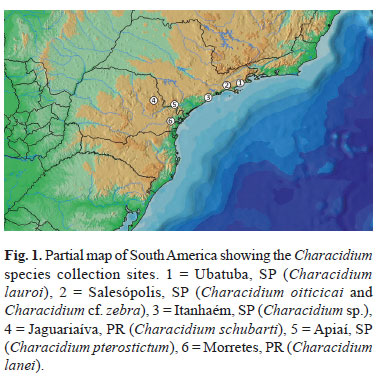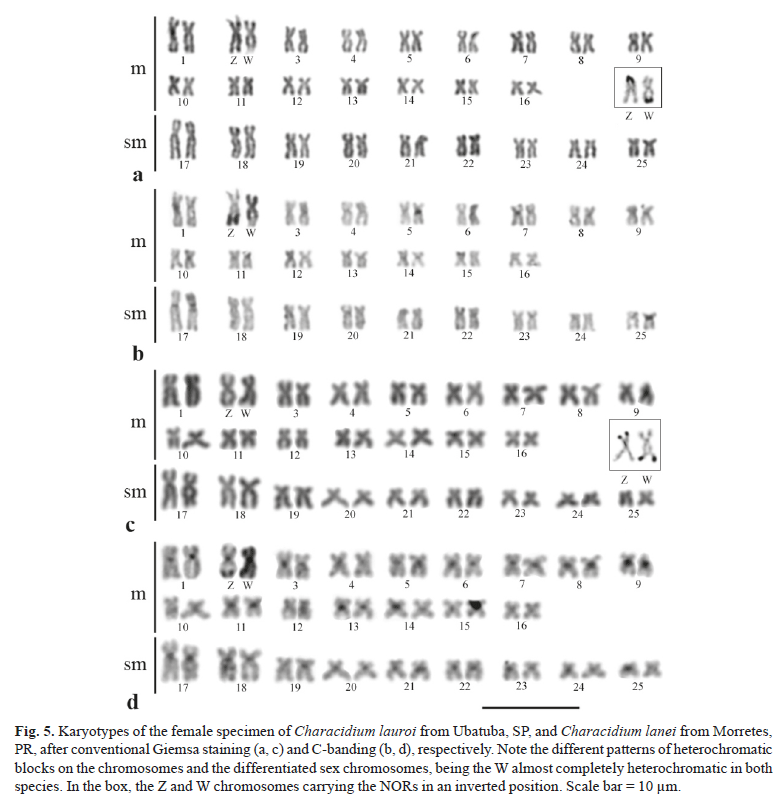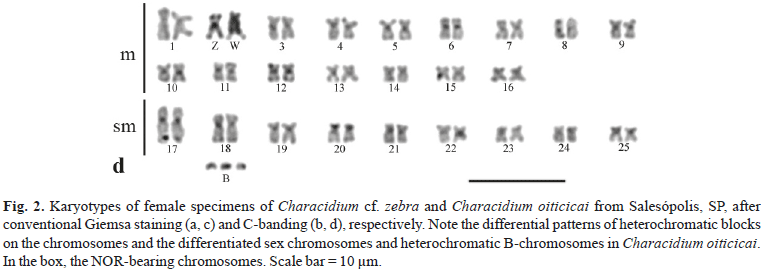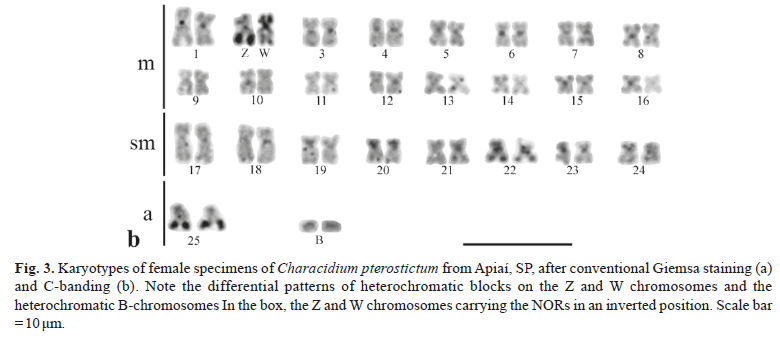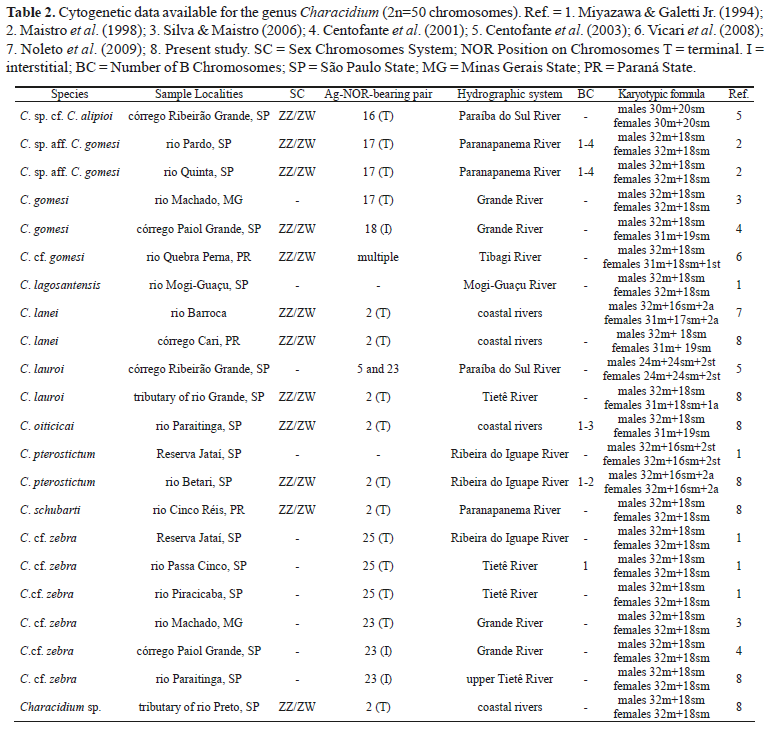Karyotypes of seven fish species of the genus Characidium, three of them studied for the first time, were characterized using conventional cytogenetic techniques (Giemsa staining, Ag-NOR, and C-banding). All species presented a diploid number of 2n=50, with only metacentric and submetacentric chromosomes, as observed in all Characidium species studied. In two species cells with one to three B chromosomes were observed. All species analyzed have a single NOR-bearing chromosome pair with morphological differences among them. Characidium cf. zebra shows heterochromatic blocks restricted to the pericentromeric regions of all chromosomes denoting the absence of a sex chromosome system. On the other hand, the species Characidium lanei, C. pterostictum, C. lauroi, C. oiticicai, C. schubarti, and Characidium sp., besides presenting pericentromeric heterochromatic blocks, exhibited large interstitial and/or terminal heterochromatic blocks, and a ZZ/ZW sex chromosome system. The constitutive heterochromatin seems to play a relevant role in the chromosome differentiation process of the studied species, mainly in relation to the sex chromosomes. The geographical isolation of the rivers in which the species were sampled, associated with their way of life restricted to headwaters environments, may have favored the process of fixation of different karyotypes found in each of the analyzed species.
Karyotypic evolution; Sex chromosomes; B-chromosomes; Ag-NORs

